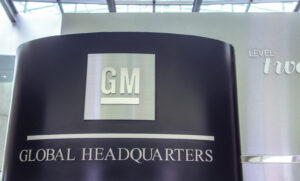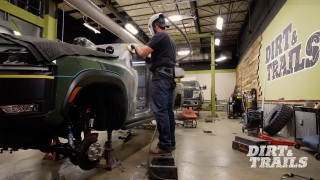GM Cuts Its Robotaxi Fleet by 50% Following Rise in Traffic Incidents in San Francisco

If you thought that the robots were one day planning on overtaking humanity, you can put your tinfoil hat away knowing that a robotaxi won’t be causing any havoc in your community. This is because California authorities have urged Cruise, the autonomous self-driving transportation service by General Motors, to downscale its fleet of robotaxis after a number of the autonomous vehicles were involved in a series of collisions, with one of them against an active fire truck in the city of San Francisco. With public safety in mind, the California DMV strongly requested that the number of active vehicles under the robotaxi fleet be cut in half.
RELATED: Frustrated San Francisco Citizens Are Sabotaging Robotaxis with Traffic Cone Dunce Caps
In a statement released by California’s Department of Motor Vehicles, “The DMV is in contact with Cruise and law enforcement officials to determine the facts and requested Cruise to immediately reduce its active fleet of operating vehicles by 50% until the investigation is complete and Cruise takes appropriate corrective actions to improve road safety.”
Following these incidents, GM has agreed to the California DMV’s request.
More Robotaxi Incidents Following Company’s Legal Victory
In a somewhat ironic twist of fate that you would see in a generic sci-fi movie, the number of incidents involving GM’s autonomous vehicles had increased almost immediately after California regulators approved of robotaxi services like Cruise and Waymo to be active all 24 hours of the day throughout San Francisco. Before, Cruise could only offer fared passenger services from 10pm to 6am, when the streets would be less busy with traffic and pedestrians.
Following the city’s approval, incidents involving these cars had increased dramatically. Two collisions occurred on the same day, with one involving a fire truck responding to an emergency. According to a post shared by Cruise, the robotaxi was able to identify and predict the firetruck’s path as it was traveling down an oncoming lane to bypass a red light. However, it was still unable to avoid the collision.
As a result, one passenger needed to be transported to the hospital for minor injuries.
The Unknown Fate for Self-Driving Cars
While the technology for self-driving cars is still in its early stages, one thing that these incidents have revealed is the existing dangers that can potentially happen with autonomous vehicles.
In mid-August 2023, it was reported that as many as 10 active robotaxis stalled in the middle of the street, causing more unnecessary traffic.
While companies like GM, Uber, Lyft, and Tesla continue to look to autonomous transportation as part of the next technological revolution, it is no doubt going to cost them a lot in time and money in order for Artificial Intelligence to read and react to every kind of on-road situation that a human driver will face.
So until the time comes when we’ll all have our own Robo-Jeeves, driving will have to continue to remain a human skill.









